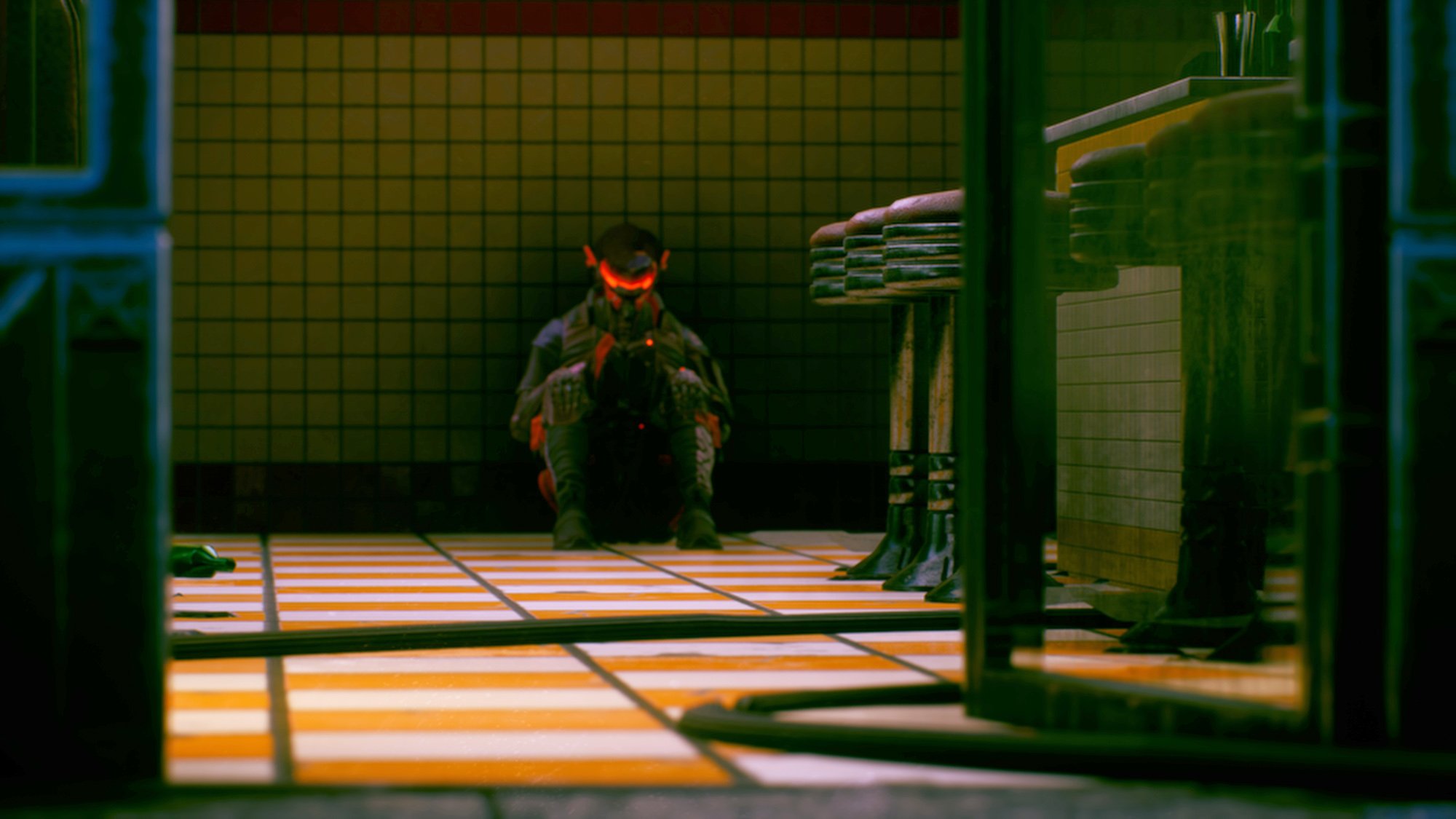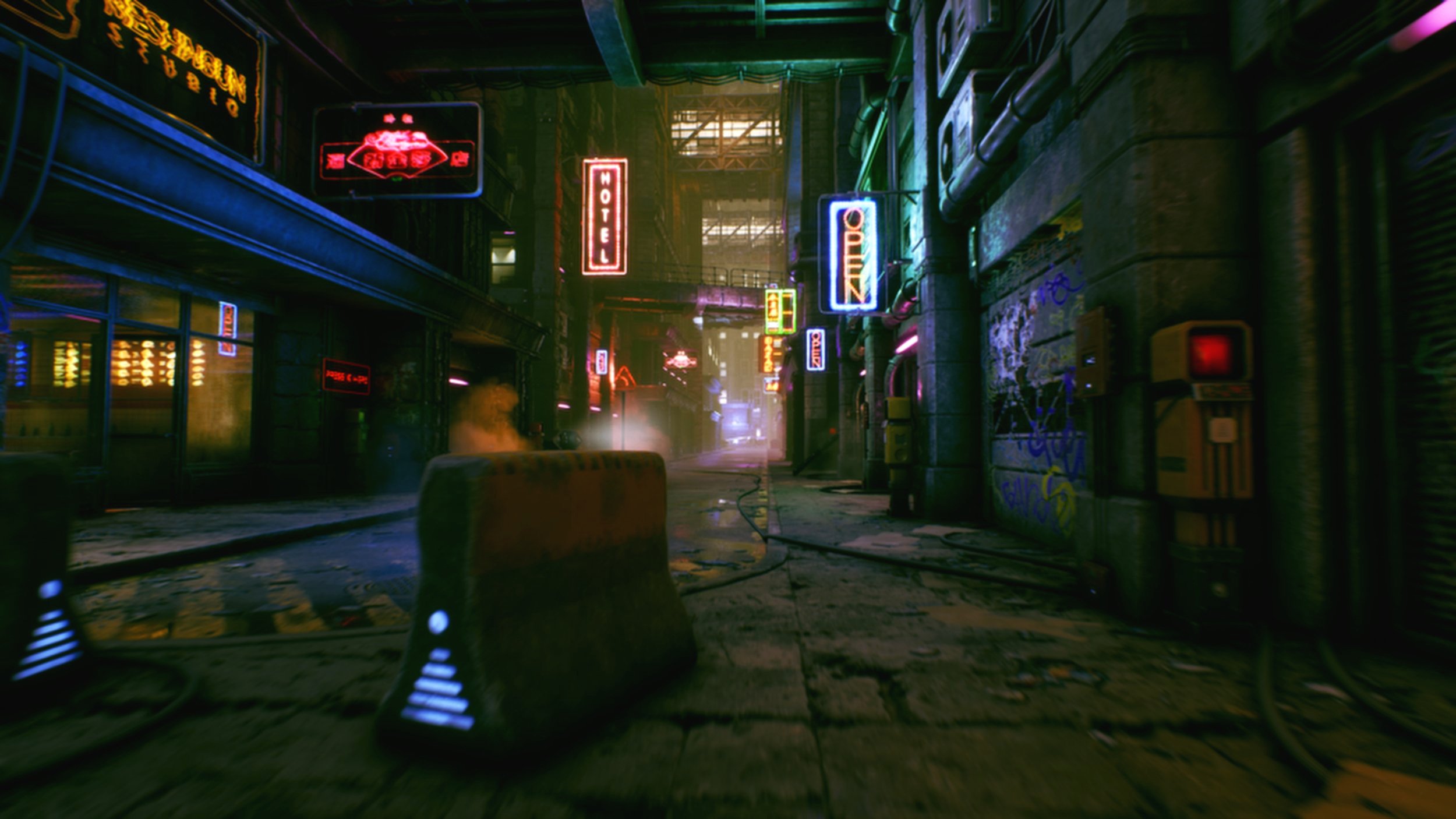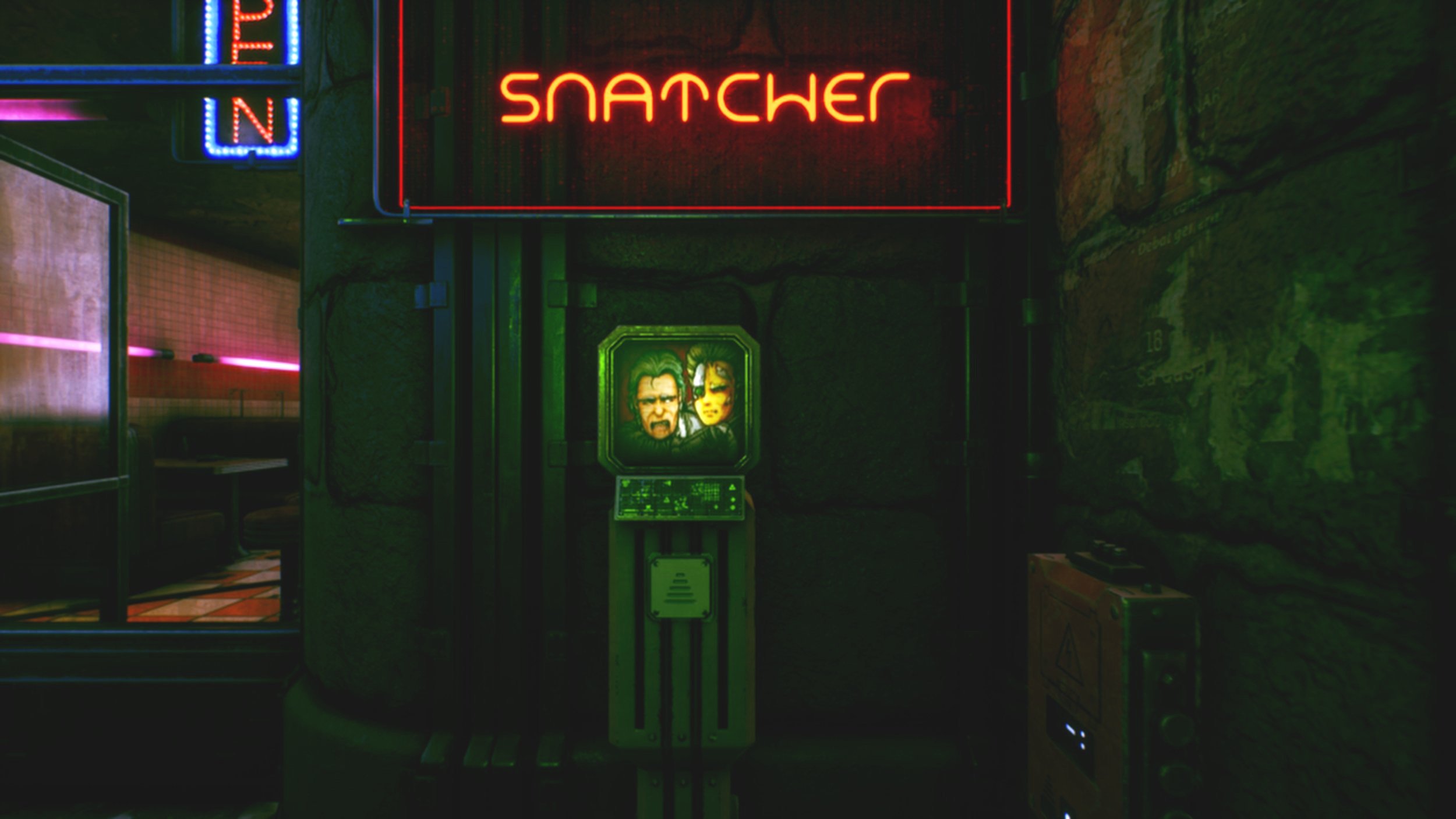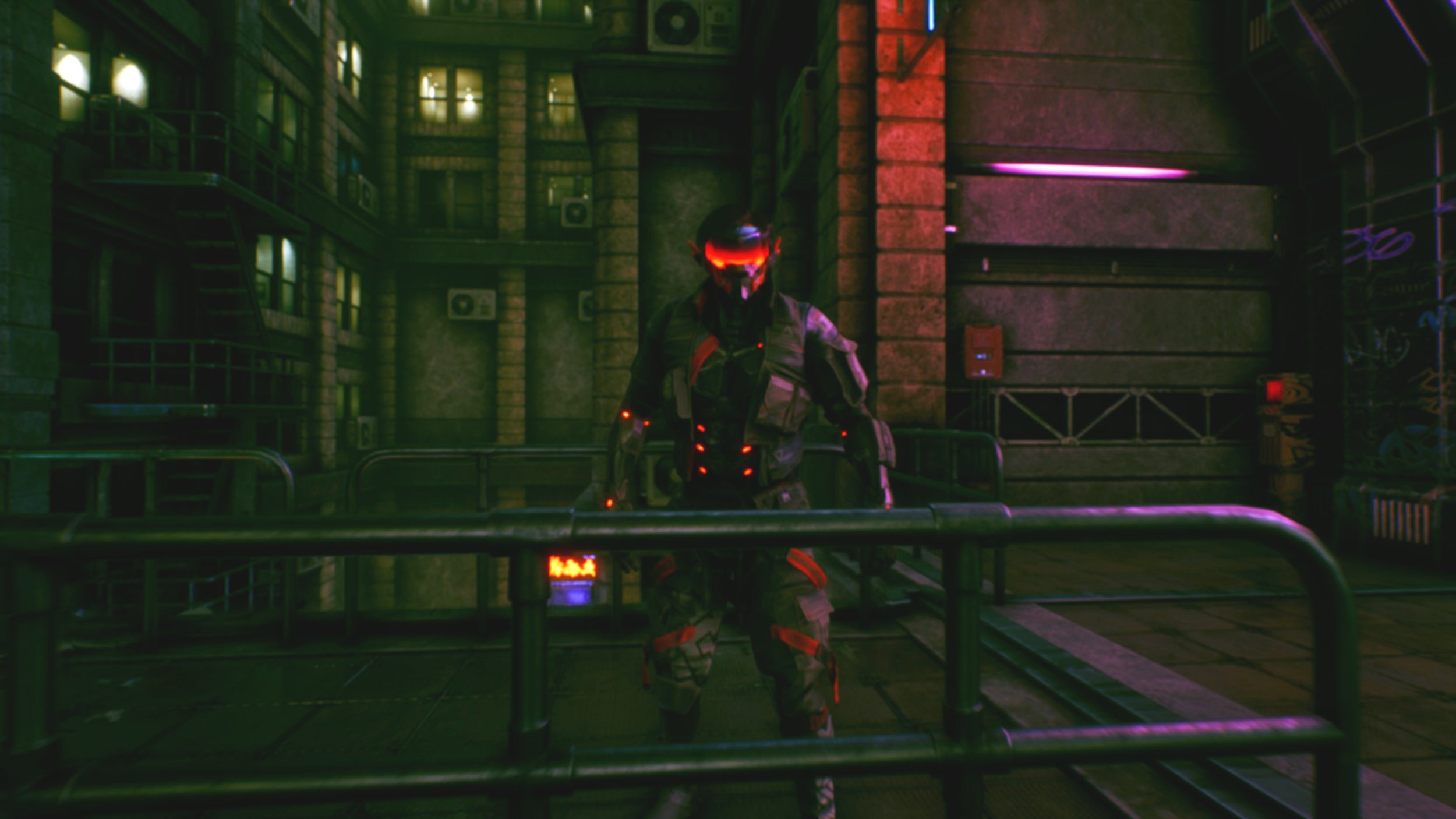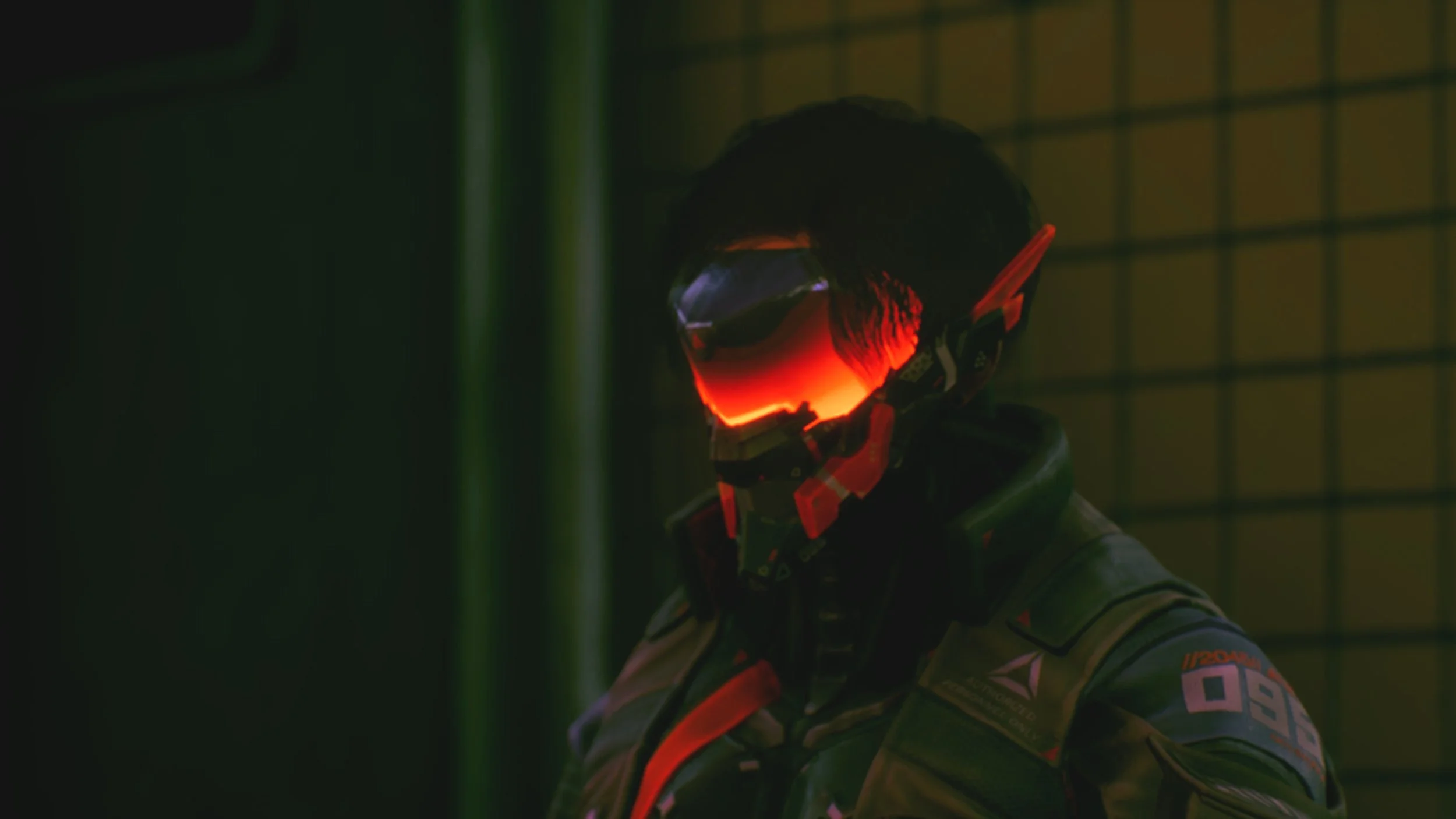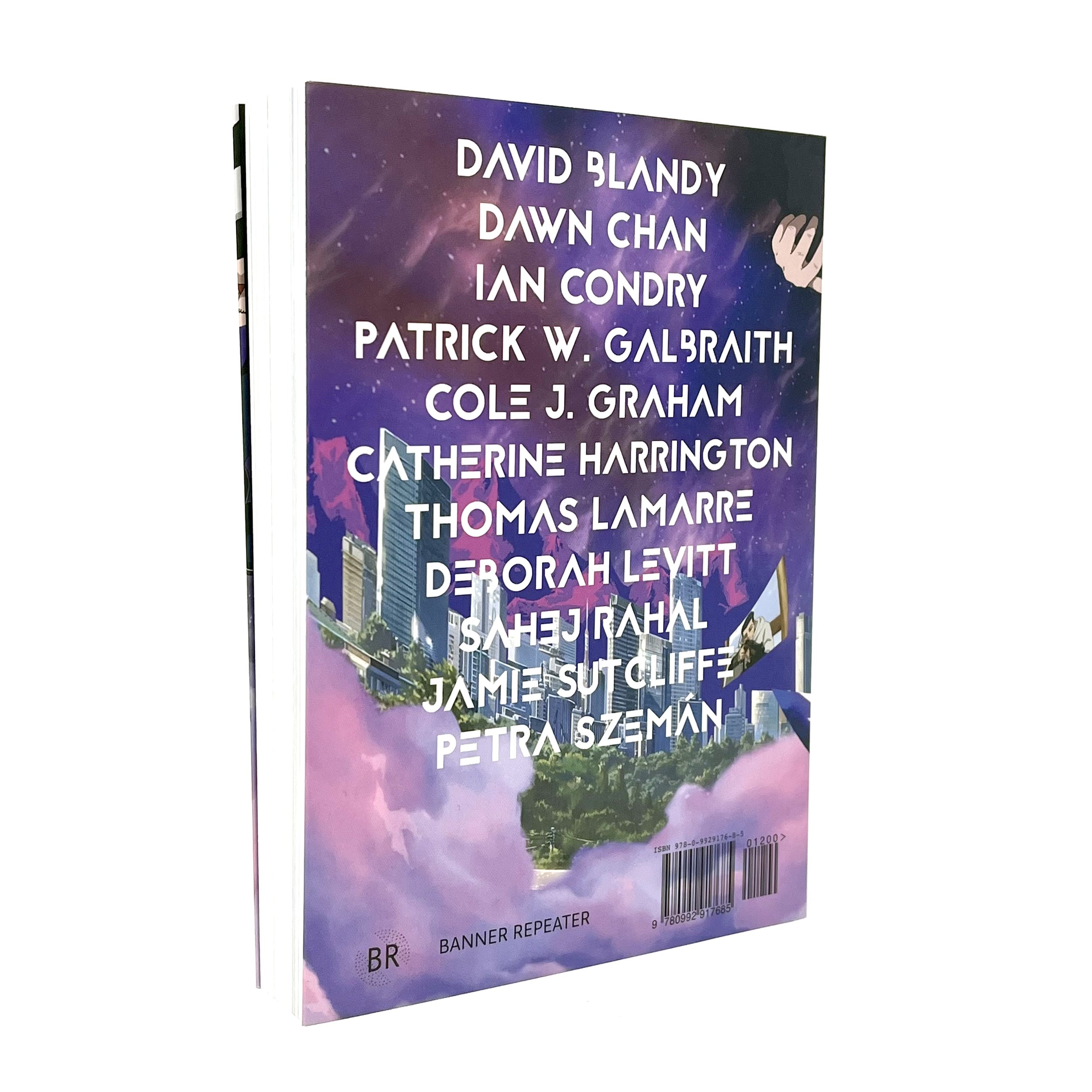ANDROIDS DREAM,2022
Stills from Androids Dream, 2022
In Androids Dream (2022), Blandy deconstructs the cyberpunk aesthetic first prototyped by Gibson’s Neuromancer (1984) and Scott’s Blade Runner (1982), and which has continued to be repeated and become ever more ossified. Formed of multiple simulacra, the work involves Unreal Engine assets, uses Kojima’s Snatcher - itself a replay of Blade Runner in videogame form - and even deploys an algorithmic mimesis of the artist's own voice. Breaking down the aesthetic form, the film in turn breaks down, repeats, refracts, and goes into reverse.
Commissioned by Petra Szemán for On Animatics for Saturday Morning Animation Club
Saturday Morning Animation Club was produced in collaboration with isthisit? and Off Site Project
Also shown as part of Alternate Prescence - Petra Szemán & David Blandy, Seventeen, London
The Video was commissioned using funding from Arts Council England as part of On Animatics, a cross-disciplinary project exploring the murky overlapping areas of contemporary art, animation, fandom, avatars and virtual worlds.
To conclude the project, the book WEEB THEORY has been published by Banner Repeater, edited by Petra Szemán and Jamie Sutcliffe.
Contributors include: David Blandy, Dawn Chan, Ian Condry, Patrick W. Galbraith, Cole J. Graham, Catherine Harrington, Thomas Lamarre, Deborah Levitt, Sahej Rahal, Jamie Sutcliffe, Petra Szemán
WEEB THEORY is a resource for artists encountering the dreamworlds of Japanese anime, video games, and comic books. It is also, however, a book about the broader conditions of animation and animacy, exploring the relationship between “life” and “image” in a hyper-mediated techno-political milieu.
Edited by writer Jamie Sutcliffe and artist Petra Szemán, and featuring newly commissioned essays, artists’ texts, and interviews with leading practitioners and theorists in the fields of media, philosophy, and anthropology, WEEB THEORY asks:
What does it mean to share our world so intimately with cartoons?
What kinds of life are made possible by the emergent vitalities of the animatic condition?
How might new considerations of empathy, queer desire, or communal responsibility emerge from our production of, or interaction with, animated entities?
Published by Banner Repeater (Order book through website)
Paperback
120mm x 170mm
262 Pages
Black and White
ISBN: 978-0-9929176-8-5
